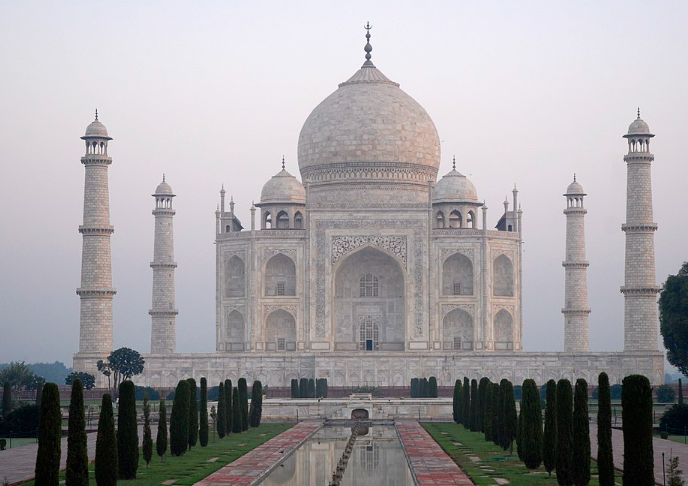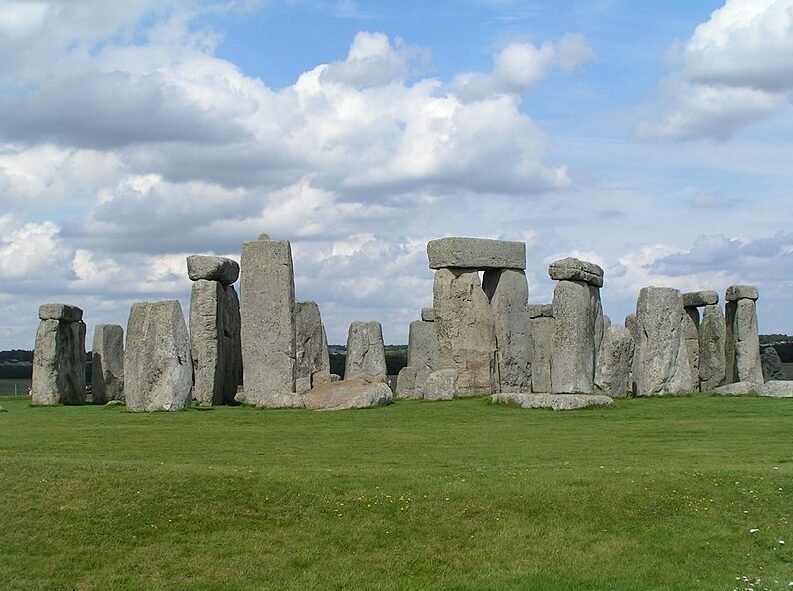Most Famous UNESCO World Heritage Sites
UNESCO World Heritage Sites are landmarks of outstanding cultural, historical, or natural significance, recognized and protected under the international framework established by the United Nations Educational, Scientific and Cultural Organization (UNESCO). These sites, spanning continents and civilizations, represent humanity’s greatest achievements and nature’s most awe-inspiring creations.
From ancient cities to breathtaking landscapes, the following are some of the most famous UNESCO World Heritage Sites that have captivated visitors and scholars alike.
The Great Wall of China (China)

A close view of the Great Wall of China.
One of the most iconic structures in human history, the Great Wall of China stretches over 20,500 kilometers across northern China. Originally built to protect Chinese states from invasions, it dates back to the 7th century BCE, with significant expansions during the Ming Dynasty (1368–1644). The Wall is an architectural marvel, featuring watchtowers, fortresses, and battlements that symbolize China’s historical resilience and ingenuity. Today, it attracts millions of visitors who hike its ancient paths and admire its grandeur.
Machu Picchu (Peru)

Machu Picchu is located in the middle of the Andes mountain range on the side of a valley that was made by the Urubamba River. It is located about 2360 meters above sea level. The Incas created terraces not just for farming but to also reduce the effect of erosion
Nestled in the Andes Mountains, Machu Picchu is an ancient Incan city believed to have been built in the 15th century under the reign of Emperor Pachacuti. Often referred to as the “Lost City of the Incas,” its well-preserved ruins include temples, terraces, and aqueducts that demonstrate the sophistication of Incan engineering. Discovered by explorer Hiram Bingham in 1911, Machu Picchu remains one of the most visited archaeological sites in the world, drawing travelers eager to witness its mystical beauty.
The Pyramids of Giza (Egypt)

Khafre’s Pyramid (second) in the Giza Plateau
The only surviving Wonder of the Ancient World, the Pyramids of Giza are among the most extraordinary human-made structures ever built. Constructed around 4,600 years ago, these Egyptian pyramids served as royal tombs for pharaohs, most notably the Great Pyramid of Khufu. The precise alignment of the pyramids and their massive limestone blocks continue to baffle researchers. Visitors are captivated by the sheer scale of these monuments and the enigmatic Sphinx that guards them.
The Taj Mahal (India)

Front view of the Taj Mahal
A masterpiece of Mughal architecture, the Taj Mahal in Agra is a symbol of love and devotion. Commissioned in 1632 by Emperor Shah Jahan in memory of his wife Mumtaz Mahal, this ivory-white marble mausoleum is renowned for its symmetrical beauty, intricate carvings, and exquisite gardens. Its changing hues at different times of the day enhance its ethereal charm, making it one of the most photographed and visited sites in the world.
The Colosseum (Italy)

The Colosseum in Rome.
The Colosseum, an ancient amphitheater in Rome, exemplifies the grandeur of the Roman Empire. Built around 70-80 AD, this elliptical structure could hold up to 50,000 spectators for gladiatorial contests, mock naval battles, and public spectacles. Despite centuries of natural disasters and looting, the Colosseum remains a powerful symbol of Roman engineering and entertainment culture, drawing millions of tourists every year.
Petra (Jordan)

An overview of Petra
Carved into rose-red cliffs, Petra is an ancient Nabatean city that flourished as a major trading hub around the 4th century BCE. Often called the “Rose City” due to its pink sandstone facades, its most famous structure is Al-Khazneh (The Treasury), a magnificent temple with intricate carvings. Rediscovered in the 19th century, Petra continues to mesmerize visitors with its blend of natural and architectural wonders.
The Acropolis of Athens (Greece)

Acropolis of Athens
Perched atop a rocky hill in Athens, the Acropolis is a testament to Ancient Greece’s artistic and architectural prowess. Dominated by the Parthenon, a temple dedicated to ancient Greek goddess Athena, this complex dates back to the 5th century BCE. The Acropolis embodies the values of democracy and classical civilization, making it one of the most revered archaeological sites in the world.
The Great Barrier Reef (Australia)

Aerial view of the Great Barrier Reef.
The world’s largest coral reef system, the Great Barrier Reef, stretches over 2,200 kilometers off the coast of Queensland. Comprising thousands of coral reefs and islands, it is home to an extraordinary diversity of marine life. Recognized for its ecological significance, the reef faces threats from climate change, prompting global conservation efforts. Snorkelers and divers flock to its crystal-clear waters to witness its vibrant underwater world.
Angkor Wat (Cambodia)

A 2023 photo of Angkor Wat
The largest religious monument in the world, Angkor Wat, was originally built as a Hindu temple in the 12th century before transitioning into a Buddhist site. Situated in the Angkor Archaeological Park, it is famed for its grand towers, bas-reliefs, and alignment with celestial movements. The sheer scale and intricate artistry of Angkor Wat make it one of Southeast Asia’s most iconic landmarks.
Yellowstone National Park (USA)

Yellowstone captivates visitors with its breathtaking scenery, diverse wildlife, and endless adventures
The first national park in the world, Yellowstone spans across three U.S. states and boasts geysers, hot springs, waterfalls, and diverse wildlife. Established in 1872, it is home to the famous Old Faithful geyser, the Grand Prismatic Spring, and the Yellowstone Caldera, one of the largest active volcanic systems on Earth. Nature lovers visit Yellowstone to explore its pristine landscapes and observe bison, wolves, and grizzly bears in their natural habitat.
The Galápagos Islands (Ecuador)

San Cristóbal Island, part of the Galápagos Islands
Renowned for their unique biodiversity, the Galápagos Islands inspired Charles Darwin’s theory of evolution. Located in the Pacific Ocean, this archipelago is home to rare species such as giant tortoises, marine iguanas, and blue-footed boobies. Strict conservation measures are in place to protect its fragile ecosystem, making it a premier destination for eco-tourism.
Stonehenge (United Kingdom)

A close view of Stonehenge.
One of the world’s most mysterious monuments, Stonehenge is a prehistoric stone circle in England, dating back over 4,500 years. Scholars continue to debate its purpose, ranging from astronomical observatory to religious site. Its alignment with the solstices has fueled theories about its role in ancient rituals. Stonehenge remains a fascinating enigma, attracting visitors eager to unravel its secrets.
Chichén Itzá (Mexico)

El Castillo, at Chichen Itza
A significant Mayan archaeological site, Chichén Itzá is famous for El Castillo, a pyramid dedicated to the feathered serpent god Kukulcán. Built between the 8th and 12th centuries, the site includes temples, ball courts, and observatories that highlight the Mayans’ advanced understanding of astronomy and engineering. Visitors marvel at the phenomenon during the equinox when a shadow resembling a serpent slithers down the pyramid’s staircase.
Frequently Asked Questions
How are World Heritage Sites selected?
Sites are nominated by their host country and evaluated by UNESCO’s World Heritage Committee, which assesses their cultural, historical, or natural importance and ensures they have legal protection.
What types of sites can be designated as World Heritage Sites?
They include ancient ruins, cities, buildings, monuments, landscapes, forests, mountains, lakes, deserts, and other culturally or naturally significant areas.

How many World Heritage Sites exist, and which country has the most?
As of July 2024, there are 1,223 sites across 168 countries. Italy has the most, with 60 sites, followed by China with 59 and Germany with 54.
What are the main objectives of UNESCO’s World Heritage Program?
It aims to preserve sites for future generations, provide emergency assistance, promote public awareness, and offer financial and technical support for conservation efforts.
What was the origin of the World Heritage concept?
It began with UNESCO’s 1960s campaign to save Egypt’s Abu Simbel temples from flooding due to the Aswan High Dam, leading to the creation of the World Heritage Convention in 1972.
What criteria must a site meet to be inscribed?
A site must have “outstanding universal value” and meet at least one of ten cultural or natural criteria, such as being a masterpiece of human creative genius or containing exceptional natural beauty.
What is the List of World Heritage in Danger?
It includes sites at risk due to war, natural disasters, urbanization, or environmental threats, prompting international efforts to safeguard them.
UNESCO World Heritage Sites offer invaluable glimpses into the past and present of human civilization and the natural world.
Have any sites been removed from the World Heritage List?
Yes, three sites have been delisted: the Arabian Oryx Sanctuary (Oman), the Dresden Elbe Valley (Germany), and Liverpool’s Maritime Mercantile City (UK) due to environmental or development concerns.
What are the benefits of being a World Heritage Site?
Listed sites gain international recognition, legal protection, access to conservation funding, and often experience increased tourism and economic benefits for local communities.
Whether architectural marvels or natural wonders, UNESCO World Heritage sites preserve the heritage of humanity and serve as reminders of our shared responsibility to protect them for future generations.
What criticisms has UNESCO faced regarding the program?
Criticism includes geographical bias favoring Europe, mass tourism harming sites, high costs of nomination disadvantaging poorer countries, and political lobbying influencing decisions.
How does UNESCO address threats to World Heritage Sites?
It collaborates with international experts, local governments, and organizations like Blue Shield International to prevent destruction, enforce conservation measures, and create awareness.
New Seven Wonders of the World: Definition, Selection, History, & Significance



























